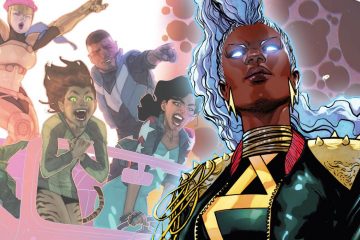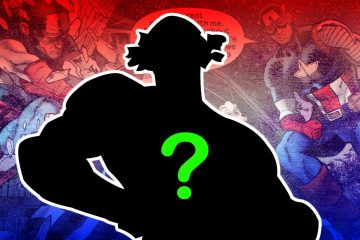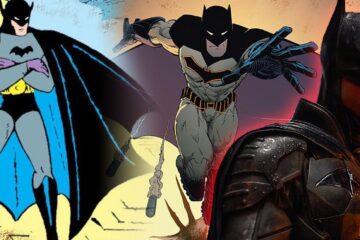Welcome to the 168th edition of Adventure(s) Time, where we examine beloved animated series and their comic cousins. This week, the epic conclusion to Justice League Unlimited’s outrageously ambitious Cadmus story arc. And if you have any suggestions for the future, let me hear them. Just contact me on Twitter.Debuting on July 16, 2005, “Divided We Fall” is another solid script from Dwayne McDuffie, and a showcase for director Joaquim Dos Santos, who will later bring this frenetic action and imagination to films like Spider-Man: Across the Spider-Verse. The Cadmus arc has presented the League as targets of a cabal of government bureaucrats, scientists, and business leaders. The League’s power must be checked, Cadmus’ no-nonsense leader Amanda Waller argues. She has a point, thanks to events of previous stories, like Darkseid brainwashing Superman, and the revelation of an alternate reality ruled by a fascist incarnation of the Justice League.For simplicity’s sake, this joint being is known as “Lexiac,” but that shouldn’t leave the impression that the two consciousnesses are truly acting as one. Brainiac is upfront about his desire to replace Luthor with a more impressive body when the appropriate moment arrives. Luthor, cunning as always, counters that Brainiac’s mission to destroy all life and preserve it in digital form lacks any real meaning. And after Brainiac finishes his work, his raison d’etre will have been fulfilled and he’ll have no other justification to continue existing. Luthor offers Brainiac something uniquely human — imagination. It’s the second time on this show Luthor’s had to utilize this level of wit and smarm to convince an all-powerful entity not to do away with him, as Amazo had a similar view of Luthor in “The Return.”
Welcome to the 168th edition of Adventure(s) Time, where we examine beloved animated series and their comic cousins. This week, the epic conclusion to Justice League Unlimited‘s outrageously ambitious Cadmus story arc. And if you have any suggestions for the future, let me hear them. Just contact me on Twitter.
Debuting on July 16, 2005, “Divided We Fall” is another solid script from Dwayne McDuffie, and a showcase for director Joaquim Dos Santos, who will later bring this frenetic action and imagination to films like Spider-Man: Across the Spider-Verse. The Cadmus arc has presented the League as targets of a cabal of government bureaucrats, scientists, and business leaders. The League’s power must be checked, Cadmus’ no-nonsense leader Amanda Waller argues. She has a point, thanks to events of previous stories, like Darkseid brainwashing Superman, and the revelation of an alternate reality ruled by a fascist incarnation of the Justice League.
For simplicity’s sake, this joint being is known as “Lexiac,” but that shouldn’t leave the impression that the two consciousnesses are truly acting as one. Brainiac is upfront about his desire to replace Luthor with a more impressive body when the appropriate moment arrives. Luthor, cunning as always, counters that Brainiac’s mission to destroy all life and preserve it in digital form lacks any real meaning. And after Brainiac finishes his work, his raison d’etre will have been fulfilled and he’ll have no other justification to continue existing. Luthor offers Brainiac something uniquely human — imagination. It’s the second time on this show Luthor’s had to utilize this level of wit and smarm to convince an all-powerful entity not to do away with him, as Amazo had a similar view of Luthor in “The Return.”
#Justice #League #Unlimited #Inspiration #Alan #Moore #Classic
Note:- (Not all news on the site expresses the point of view of the site, but we transmit this news automatically and translate it through programmatic technology on the site and not from a human editor. The content is auto-generated from a syndicated feed.))



